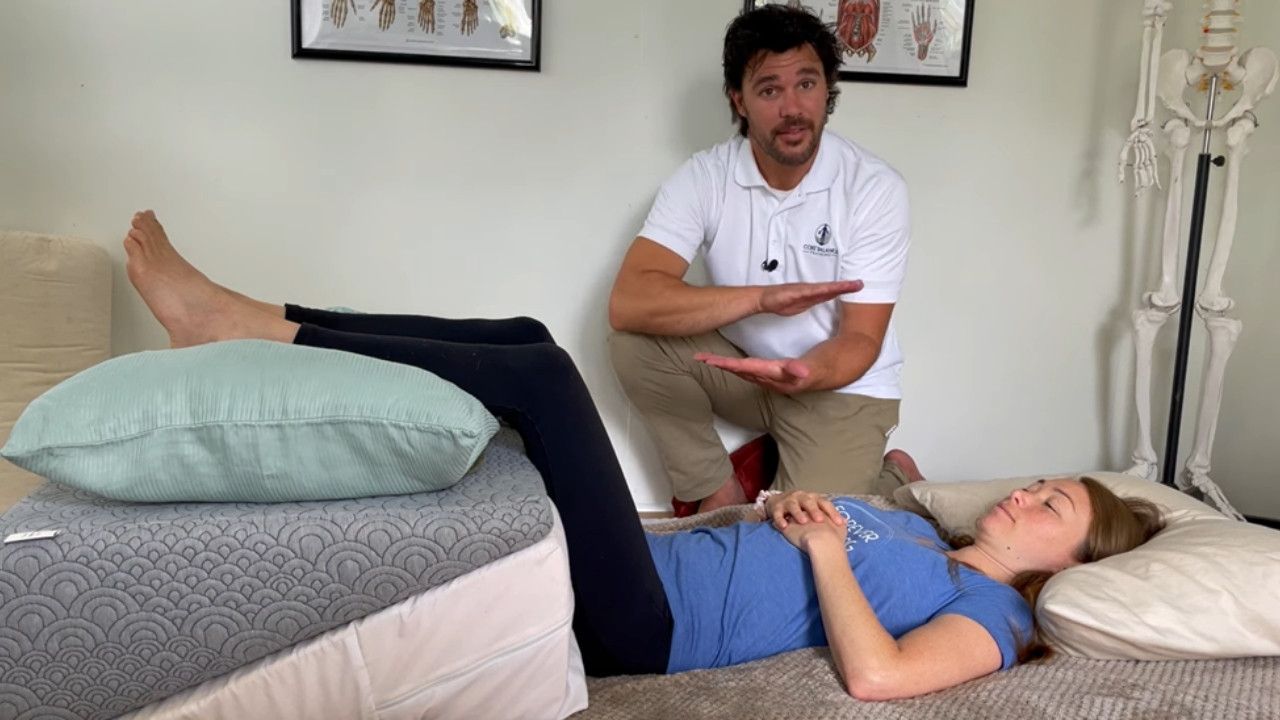Best Sleeping Positions for Lower Back Pain: SI Joint Relief
Mar 27, 2025
Sleeping becomes very difficult with sacroiliac (SI) joint pain, creating lots of pain in your lower back. Let’s look at the best sleeping position for this problem to help you get the proper rest you need, since your current sleeping position is likely aggravating pain.
The sacroiliac joint is involved in stabilizing your pelvis, but it can often become misaligned during sleep which can cause lower back pain and discomfort by morning. You can resolve this issue and relieve pressure on your SI joint with proper pillow placement and other support for your posture, which we’ll get into.
Why Side Sleeping Can Hurt the SI Joint
Side sleeping often makes SI joint pain worse because of where the SI joint is located in your body. The SI joint is located where your pelvis connects to the base of your spine and sits at a 45 degree angle on each side. If your body strays from that angle while you’re sleeping, it can twist the joint and cause pain.
To solve this issue, you can adjust your pillow to position your body and align with the 45 degree angle of the SI joint. Let’s learn more below:
The 45-Degree Side Sleeping Position
Here’s how you can adjust your side sleeping position to align with the 45 degree angle of the SI joint.

- Use a Bolster or Pillow: Place a firm pillow or bolster behind your back, helping you rest at a slight, 45 degree tilt so you are not fully on your side or your back.
- Support Your Knees: Place another pillow between your knees, preventing twisting in your lower body and allowing the pelvis and spine to be properly aligned, minimizing the strain on your SI joint.
- Adjust for Comfort: In this sleeping position, you are resting on the flatter part of your pelvis which can reduce torque on the SI joint and alleviate pain.
Sleeping on Your Back
Side sleeping may not be for you, but good news: you can reduce SI joint pain when sleeping on your back by elevating your legs.

- Elevate Your Legs: You can lift your legs by using several pillows (or a wedge), flattening your back against the mattress and relieving pressure on your pelvis and lower back.
- Support the Lower Back: Make sure that even when lifting your legs your lower back remains in contact with the mattress, ensuring the right alignment of your spine. By doing so, you reduce stress on your SI joint, allowing more comfortable sleep.
Sleeping on Your Stomach
Stomach sleepers, don’t panic! Here’s how you can reduce SI joint pain with this sleeping position.

- Use a Low Abdomen Pillow: Place a small and firm pillow under your abdomen to lift your pelvis, taking pressure off of your lower back and SI joint.
- Find the Sweet Spot: The pillow should not be too high or too low as this can elevate the issues, so adjust its position until you feel a gentle lift in your pelvis without straining your lower back. The slight elevation can reduce muscle tension in your lower back and provide SI joint pain relief, even when sleeping on your stomach.
Additional Tips for Sleeping with SI Joint Pain
- Experiment with Pillow Positions: Finding the right pillow type and pillow placement can be difficult but don’t be afraid to keep trying until you find what works best for your pain and sleeping position!
- Check Your Mattress Support: A supportive mattress can make a significant difference. A medium-firm mattress is generally recommended as it provides enough support without being too hard. If your mattress is sagging or too soft, it may be contributing to your pain.
- Loosen Up Before Bed: Incorporate small movements before bed, like the bridge pose or back and front anchor awareness movements.
- Use Heat for Tension Relief: Applying a heating pad to your lower back (or other forms of heat therapy) before sleeping can relax your lower back muscles and relieve pain in your SI joint.
Listen to Your Body
Pain is unique to everyone, so make sure that you listen to your body and understand how different sleeping positions can impact your lower back pain. What works for someone else might not work for you, so experimenting with different positions is important and crucial in relieving your SI joint pain.
Final Thoughts
Whether you’re a side, back, or stomach sleeper, using these tools will help reduce SI joint pain and make sure your SI joint is properly aligned, helping you wake up a little easier and more refreshed.
If you want to improve chronic lower back pain in other ways outside of the proper sleeping position, check out our Core Balance Training program free 7-day trial!
Have you found a sleeping position that helps ease your SI joint pain? Or are you planning to try one of these tips tonight? Drop a comment below. Your experience might help someone else find relief!













